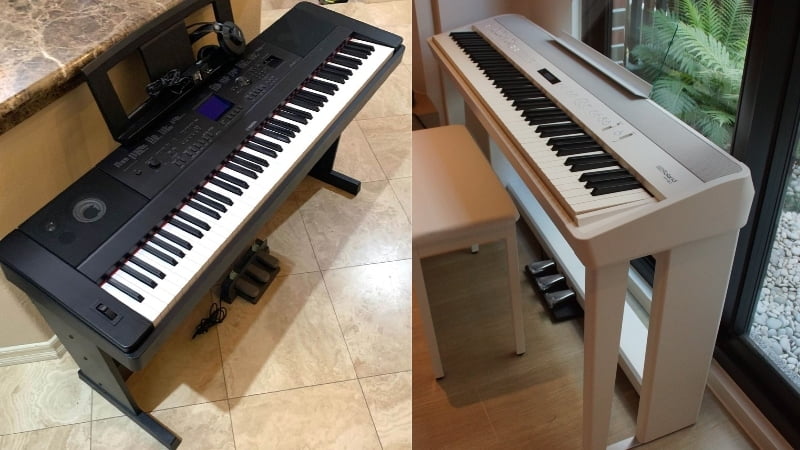Learn all the features, benefits, and drawbacks of both pianos as we find out which model is better in this Yamaha DGX-660 vs Roland FP-90 comparison!
Yamaha and Roland are easily some of the best digital piano brands on the market. And in this Yamaha DGX-660 vs Roland FP-90 comparison, we’ll look at the features, benefits, and drawbacks of each model.
While the Yamaha DGX-660 is one of my favorite pianos on the market, the Roland FP-90 actually won this comparison. This was quite a surprise for me, as the Yamaha DGX-660 usually beats out all other comparable options in its price range.
However, aside from the tone, the Roland FP-90 is the better pick in just about every category. With a better hammer action system and more polyphony, the Roland FP-90 is one of the best pianos you can get if you’re a performer in need of a top-tier piano.
That said, the best pick for you may vary depending on your needs. That’s why I dive into all the details and features of both models in my comparison below. And by the end of this comprehensive review, you’ll know exactly which model suits your needs and which one is the better investment.
Yamaha DGX-660 vs Roland FP-90: Comparison Chart




Last update on 2025-12-22 / Affiliate links / Images from Amazon Product Advertising API
Yamaha DGX-660 vs Roland FP-90: A Head-to-Head Comparison
I always compare digital pianos based on their tone, feel, and polyphony. In my opinion, these are some of the most important characteristics of any piano. And when using these comparison points for these pianos, the final score was 2-1 in favor of the Roland FP-90.
So, even if the Roland model ended up winning the comparison, you can see that it was by a very fine margin. This is because both of these pianos are great picks that will serve you very well. But as you’ll see in my detailed comparison below, the Roland FP-90 holds a very slight advantage.
Tone
The winner: Yamaha DGX-660
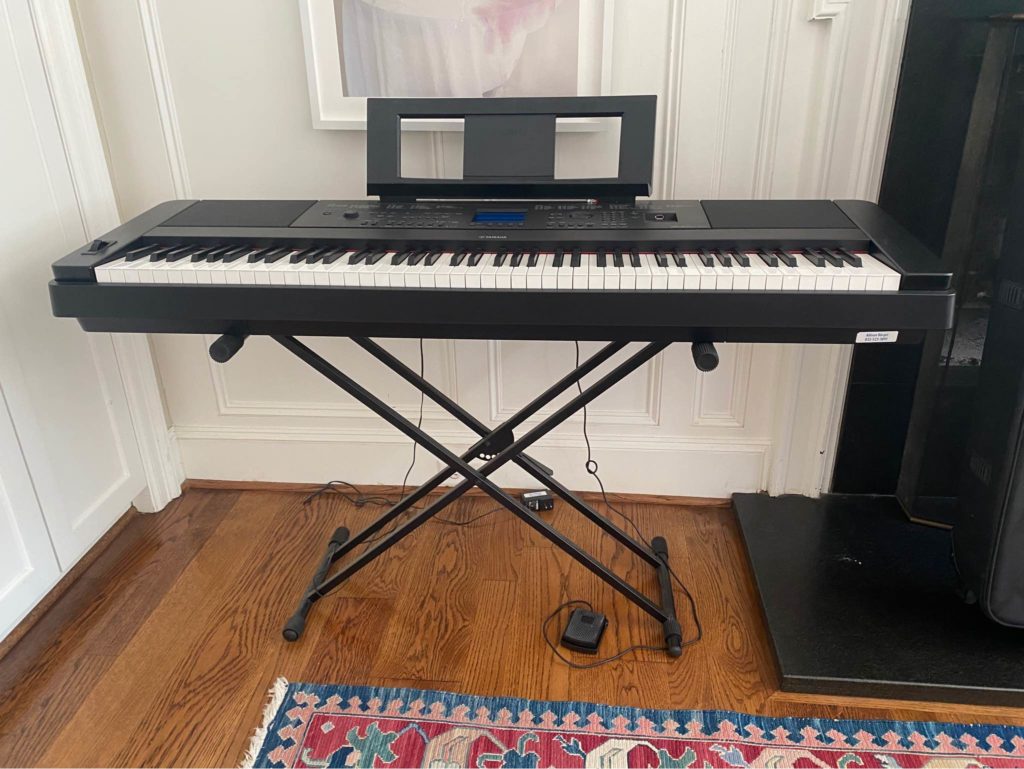
To start this comparison, I gave a good listen to the tones of either piano and also checked out the sound library. In my opinion, a digital piano is only worth getting if it has good tones. And luckily, both of these pianos delivered in this category.
That said, the Yamaha DGX-660 has a slight advantage because of its realistic piano sounds and massive sound library. While the Roland FP-90 put up a good fight, it wasn’t enough to put it over the Yamaha.
+Tone Generation
The Yamaha DGX-660 uses one of my favorite Yamaha tone engines, the Pure CF Sound Engine. Despite the fancy name, this is still a sample-based tone generator. However, the main difference is that this piano derives its samples from the Yamaha CF Grand pianos, which are some of the most well-known options in the game. That’s why when I played this instrument, I had a range of very realistic piano tones at my disposal.
This is great because I like playing various genres. So, whether I need a bright, dark, or grand-sounding piano, the DGX-660 has me covered. On top of that, it has a range of voices from the XGLite Suite, which aren’t as realistic as the Pure CF Sound Engine, but they give you a lot of variety as a musician.
On the flip side, the Roland FP-90 uses the SuperNatural Piano Sound. This engine works in the same way as the Pure CF Sound Engine so you can expect some top-tier samples from this piano.
However, Roland doesn’t have the privilege of recording top-tier grand pianos like Yamaha. So, while the Roland’s sounds come close to an acoustic piano, they aren’t exactly the best. These tones are definitely much better than traditional sample-based digital pianos, but they don’t have the same crispness and character as the Yamaha DGX-660.
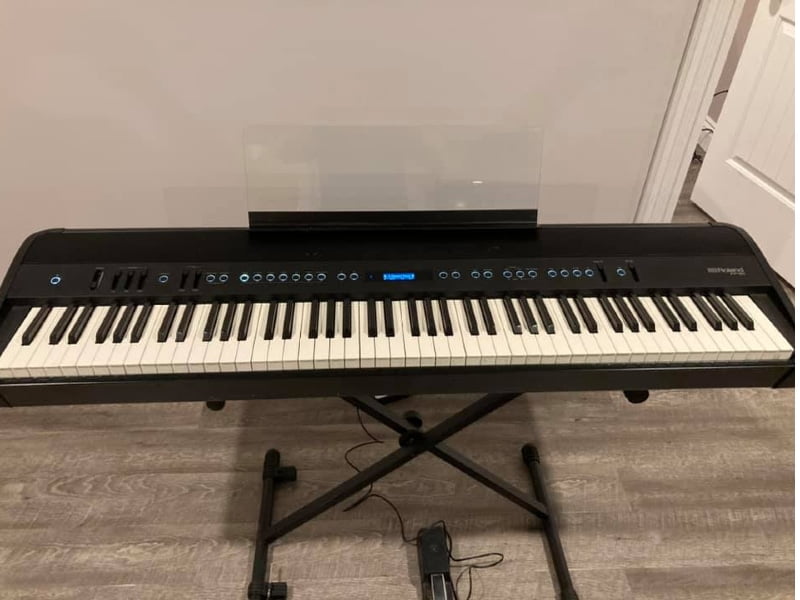
+Sound Library
The Roland features a sound library that you must take seriously. This piano comes with over 350 different voices. This means you’ll have many options and categories to choose from, giving you a lot of control over your tone.
In this price range, pianos usually have very small sound libraries that only feature a handful of voices. While most beginners only need a few voices to learn the basics, you will start to need a wider sound library when you progress through your musical journey. So, it was really nice to see that the Roland FP-90 comes with a packed sound library.
That said, the Yamaha DGX-660 still holds an advantage in this category. The 350 voices on the FP-90 are more than enough, but the DGX-660 does it much better, giving you a sound library with over 550 voices. While you have the same voice categories as the Roland, you have more options within each category.
And since the Yamaha also has a better tone generator, it wins in terms of sound quantity and quality.
But even if these pianos feature wide sound libraries, you can’t expect all the tones to sound realistic. When I went through the voices of both pianos, I found that quite a few tones lacked the detail or clarity you’d expect. This is a small complaint, but it’s still something to remember when selecting a digital piano for your home.
Feel
The winner: Roland FP-90
The next feature that I looked at was the feel. When you play a digital piano, you want it to feel as close to an acoustic piano as possible. That way, your playing is much more natural and fluid, especially if you started learning on a real acoustic instrument.
And when I compared the feel of these pianos, the Roland FP-90 came out on top. This was quite a surprise since the Yamaha model comes with one of the best hammer action systems in the game. However, Roland really came through with the hammer action on the FP-90, which is why it took this point.
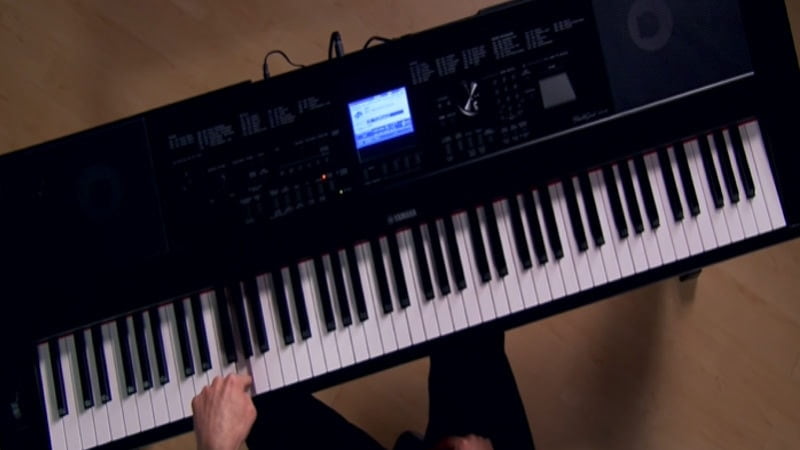
+Hammer Action
The hammer action of the Yamaha DGX-660 comes from the Graded Hammer Standard or GHS system of Yamaha. This system replicates the subtle weight differences in piano keys that you will feel when playing a real acoustic piano. This is one of the key features of many Yamaha pianos and one of my favorite hammer action systems on the market.
On top of that, the DGX-660 features coated ebony keys. That way, there’s a slight textural difference between the white and black keys, even if they are both made of plastic. This makes the DGX-660 feel very realistic, which is a huge plus.
That said, the Roland FP-90 still feels more realistic. It has a PHA-50 keyboard so you can expect a graded action. These pianos are in a slightly higher price range than others, which is why they both come with great graded hammer action systems.
However, the main reason the Roland FP-90 wins is because of the key texture. This piano features plastic and wood hybrid keys. This means that you get a much more realistic texture when playing this piano, which is why it ended up winning this category.
If you’re a beginner, you likely won’t feel the textural difference right away. But the more you play an acoustic piano, the more important the key texture becomes.
Polyphony
The winner: Roland FP-90
The last comparison point I had was the polyphony. With digital pianos, polyphony is very important as you want to get a model that can play many notes simultaneously. That way, you can be much more expressive and accurate in your playing.
The Yamaha DGX-660 has a pretty impressive polyphony. With a 192-note polyphony, you can stack a huge amount of notes on top of each other and still expect a crisp and clear tone. In fact, this model beats out the polyphony of many options in the price range.
While this is true, the Roland FP-90 still comes out on top as it has a limitless polyphony for certain voices. This means you won’t have to worry about notes fading out too fast because the FP-90 can handle as many notes as humanly possible.
This is due to the fact that computers and technology have come a very long way since the beginning of digital pianos. So, while either option offers decent polyphony, the Roland is the clear winner.
Yamaha DGX-660 vs Roland FP-90: The Similarities
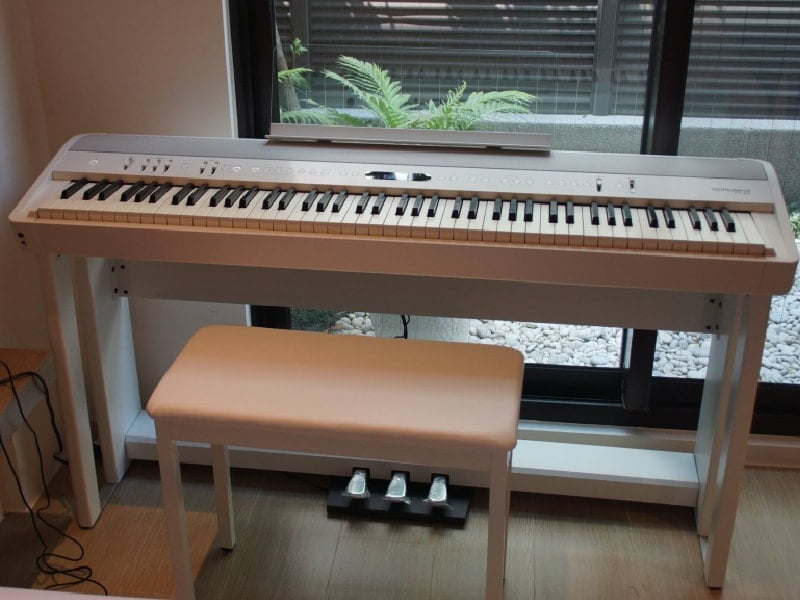
While these pianos come from different brands, they share a fair amount of features. For example, they are both portables. This means that you can easily bring either option around with you, whether you want to go to a gig, jam session, or a piano lesson.
On top of that, both pianos have a wide range of playing modes. This gives you a bit more flexibility on the piano and allows you to experiment with different sound combinations and playing styles.
Both of these pianos are very versatile and offer a lot of value for the money. But after rigorous testing and deep research, I found that the Roland FP-90 holds a small advantage, which is why it won this comparison.
Quick Rundown of the Yamaha DGX-660
- The Pure CF Sound Engine faithfully reproduces the tone of a meticulously sampled and highly acclaimed Yamaha concert grand piano
- GHS weighted action is heavier in the low register and lighter in the high, just like an acoustic piano
- Score display puts music notation of MIDI songs on the screen, helping you play your favorites by following the bouncing ball
- The Piano room lets you choose from a variety of pianos and acoustic settings to create your own personal piano environment
- The 6 track recorder allows you to capture your performances and song ideas, then add additional layers to spice up your pieces
Last update on 2025-12-22 / Affiliate links / Images from Amazon Product Advertising API
Quick Rundown of the Roland FP-90
No products found.
Product Video
Related Articles to Yamaha Dgx 660
- Yamaha YDP-164 vs DGX-660: Why You Should Go for the DGX-660
- Yamaha DGX-530 vs 660: Why the DGX-660 Is the Better Pick
- Yamaha DGX-505 vs 660: Why the DGX-660 Is the Better Pick
- Yamaha DGX-660 vs DGX-640: A DGX Comparison
- Yamaha DGX-660 vs DGX-630: A DGX Comparison
- Yamaha DGX-620 vs 660: Finding the Best DGX Model
- Yamaha DGX-660 vs YDP-163: Which Is the Better Piano?
- Yamaha DGX-660 vs Roland Juno DS-88: Which Is the Better Piano?
- Yamaha DGX-660 vs Casio PX-360: Which Is the Better Piano?
- Yamaha DGX-660 vs YDP-144: Which Is the Better Yamaha Piano?
- Yamaha DGX-660 vs Korg Havian 30: Which Is the Better Digital Piano?
- Yamaha DGX-660 vs Casio CGP-700: Which Is the Better Pick?
- Yamaha DGX-660 vs YPG-535: Finding the Best Yamaha Digital Piano
- Yamaha DGX-660 vs P515: Is the P515 Worth the Extra Cost?
- Yamaha DGX-660 vs P-115: Which Yamaha Model Is Better?
- Yamaha DGX-660 vs Casio PX-560: Which Piano Offers More Value For The Money
- Yamaha DGX-660 vs 650: A DGX Comparison
- Korg XE-20 vs Yamaha DGX-660: Finding the Best Digital Piano
- Yamaha P45 Vs DGX-660: A Head-to-Head Comparison
- Yamaha DGX 670 Vs 660: The Distinct Difference In Details You Need To Know About
- Yamaha YDP-103 Vs DGX-660: Which Is The Better Yamaha Piano?
- Casio PX-770 Vs Yamaha DGX-660: Should You Get A Portable Or Console Digital Piano?
- Yamaha P71 vs DGX-660: Can the Amazon Exclusive Beat Out the Premium Model?
- Yamaha P125 vs DGX 660 Comparison: Can the P125 Hold Its Own Against the DGX 660?
References:
- Yamaha DGX-660: https://usa.yamaha.com/products/musical_instruments/pianos/p_series/dgx-660/index.html
- Roland FP-90: https://www.roland.com/ca/products/fp-90/specifications/
Lulacruza is an electronic folk duo operating at the junction of the hypermodern and the ancient. Our music weaves together hypnotic female singing, South American folk instruments and electronic processing, while channeling pulsating waves from the source of creation.
Lalucruza is also a community where you can connect with other music lovers to collaborate, exchange ideas and share knowledge. A platform for who wants to learns the basics of playing piano, guitar, drum masters’ technique, etc.. is the premise of our website.
